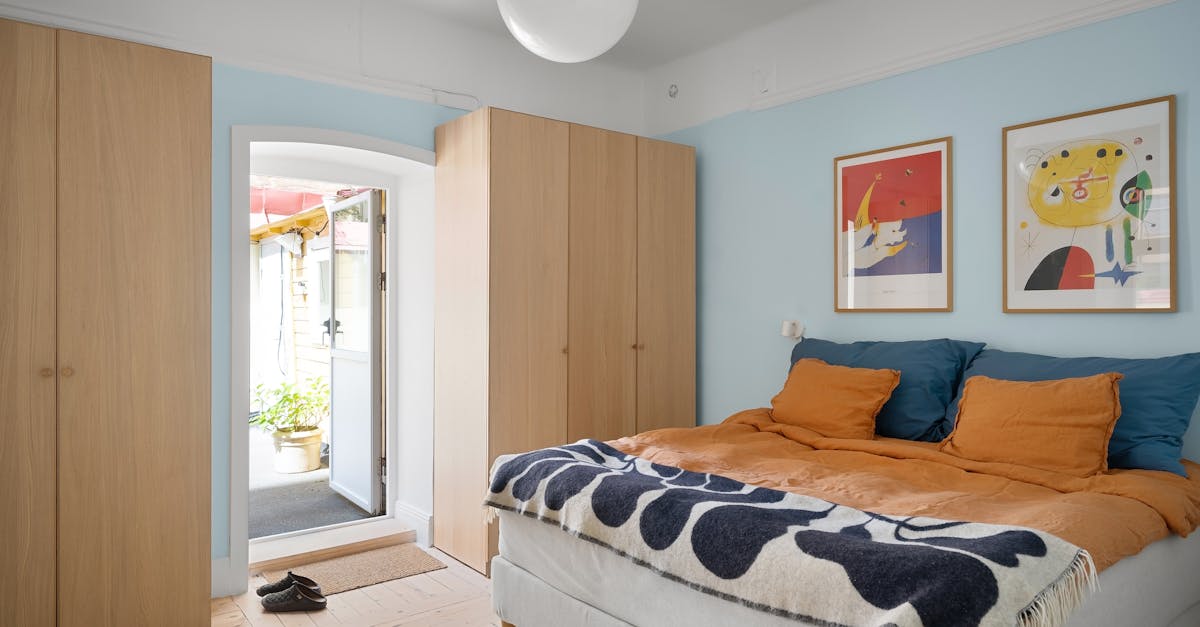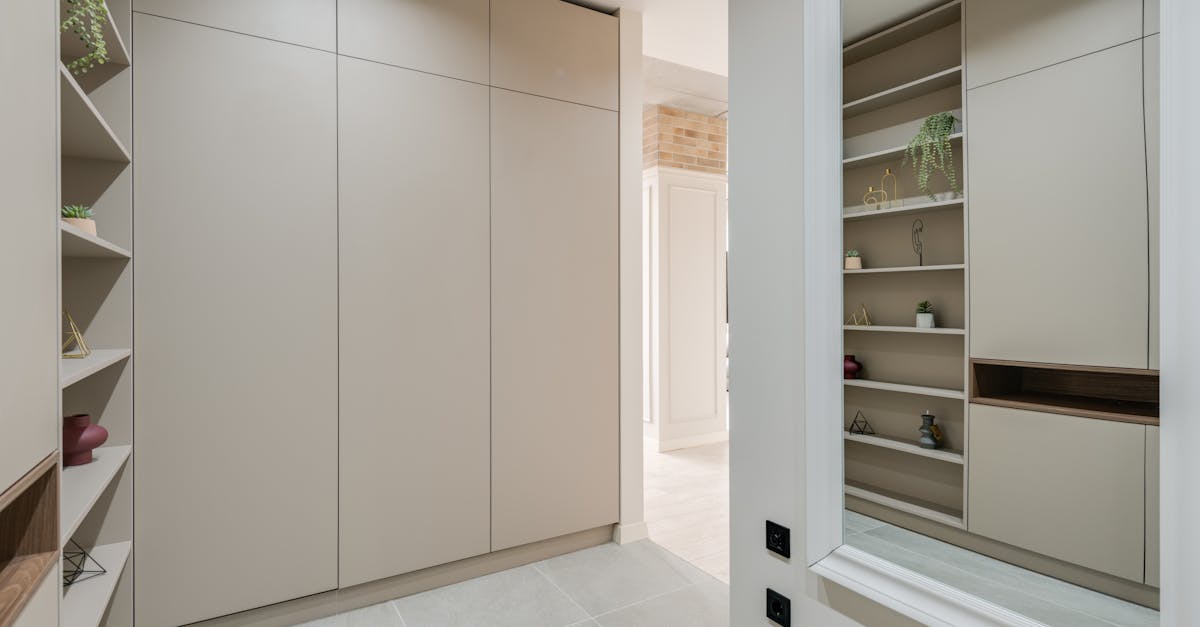
Table Of Contents
Addressing Common Issues
Built-in wardrobes can sometimes present a variety of issues that require attention. One common problem is sticking doors, which can be caused by misalignment, humidity, or debris obstructing the hinges. Regular maintenance checks can help to identify these issues early. Ensuring that tracks are clean and lubricating hinges with appropriate products can significantly improve functionality and prolong the lifespan of the doors.
Another issue faced by owners of built-in wardrobes is wear and tear on the interior components. Shelving and hanging rods can become warped or damaged over time, particularly if overloaded. Conducting periodic assessments of the interior layout can help avoid structural problems. Rearranging items and keeping heavier items towards the bottom can distribute weight more evenly and safeguard against potential damage.
Solutions for Sticking Doors
Sticking doors in built-in wardrobes can be a significant inconvenience. Over time, humidity changes and temperature fluctuations can cause the wood to expand, leading to misalignment. One immediate solution is to check the hinges for wear and tear. Tightening loose screws or replacing damaged hinges can often resolve the issue. If hinges are in good condition, assessing the alignment of the wardrobe doors is necessary. A simple adjustment could restore smooth operation.
Another effective technique involves lubricating the edge of the door. Applying a silicone-based lubricant to the hinges will help reduce friction. For doors that continue to bind, consider using a fine sandpaper to gently smooth out the areas that are sticking, particularly at the edges. Regular maintenance will also prevent dust and debris accumulation, ensuring that built-in wardrobes remain functional and easy to use.
Protecting Against Pests
Built-in wardrobes can be a magnet for pests if not adequately protected. Regularly inspecting your wardrobe for signs of infestations is essential. Look for droppings, webs, or damage to clothes. Dust and vacuum the interiors frequently to remove any food particles that may attract unwanted guests. Consider using natural deterrents like cedar blocks or lavender sachets to keep wardrobes smelling fresh while discouraging moths and other pests.
Proper ventilation is crucial in safeguarding built-in wardrobes from moisture and mould, conditions that can lure pests. Ensure that the wardrobe has air circulation, particularly in humid climates. Adding a dehumidifier in the room can help control excess moisture. Additionally, sealing any gaps or cracks in the structure will help prevent pests from entering. Regularly checking and maintaining these areas will contribute significantly to the long-term health of your built-in wardrobes.
Preventive Measures for Wardrobe Safety
Built-in wardrobes can attract pests if not properly maintained. Regularly inspecting the wardrobe for any signs of infestations, such as droppings or damage to the wood, is essential. Keeping the area around the wardrobe tidy can deter pests from taking up residence. Seal any gaps or cracks in the woodwork to eliminate potential entry points for unwanted guests.
Cleaning your built-in wardrobes regularly also plays a significant role in pest prevention. Dust and clutter can attract insects, so it’s important to remove old clothes and items that are no longer needed. Using airtight storage containers for off-season clothing can further protect your belongings. Consider using natural pest deterrents, such as cedar blocks, to keep moths and other insects at bay while adding a pleasant scent to your wardrobe space.
Seasonal Care Practices
Seasonal care practices are essential for maintaining the longevity and functionality of built-in wardrobes. As the seasons change, so do the conditions within your home. During hotter months, increased humidity can lead to moisture buildup, which may impact the integrity of your wardrobe. To counter this, ensure adequate ventilation by keeping the doors open when possible. Regularly check the interior for any signs of mildew or mould and address them promptly to prevent further damage.
As winter approaches, adjusting the contents of your built-in wardrobes is a good idea. Consider rotating summer clothing to an accessible spot while packing away heavier winter garments. This not only maximises space but also makes it easier to find what you need. Make sure to clean and vacuum the interior before storing seasonal items to remove dust and potential pests. A thorough inspection of the wardrobe’s interior will help you identify any repairs needed, ensuring your storage solution remains both functional and appealing throughout the year.
Preparing Your Wardrobe for Seasonal Changes
When preparing your built-in wardrobes for seasonal changes, start by assessing the current contents. Remove items that are out of season, such as heavy winter coats or summer dresses. This helps to create more space and allows you to organise the remaining clothes effectively. Consider vacuum-sealing off-season garments to save space and protect them from dust. Utilising storage bins or boxes within the wardrobe can also help keep items neatly packed away and easy to access when needed.
Next, take the opportunity to clean and maintain the wardrobes as you transition seasons. Wipe down surfaces with a soft cloth and an appropriate cleaner to remove any dust or grime that may have accumulated. Check for any signs of wear or damage, ensuring that all hardware is functioning correctly. If applicable, consider refreshing the interior with a pleasant scent by using cedar balls or lavender sachets, which can also help deter pests. This seasonal routine not only maintains the quality of your built-in wardrobes but also enhances your overall wardrobe experience.
FAQS
What are the common issues I might face with my built-in wardrobe?
Common issues include sticking doors, pest infestations, and wear and tear due to seasonal changes.
How can I fix sticking doors on my built-in wardrobe?
You can fix sticking doors by adjusting the hinges, lubricating the tracks, or checking for any obstructions that may be causing the issue.
What preventive measures can I take to protect my wardrobe from pests?
To protect your wardrobe from pests, ensure good ventilation, use airtight storage boxes, and regularly inspect your wardrobe for signs of infestations.
How should I prepare my wardrobe for seasonal changes?
Prepare your wardrobe for seasonal changes by decluttering, rotating your clothing according to the season, and ensuring proper cleaning to prevent mildew and odours.
How often should I perform maintenance on my built-in wardrobe?
It's recommended to perform maintenance checks every few months and conduct a thorough cleaning and inspection at least twice a year.
